A.R. Mitchell's Blog, page 2
August 7, 2025
Skills to Heal
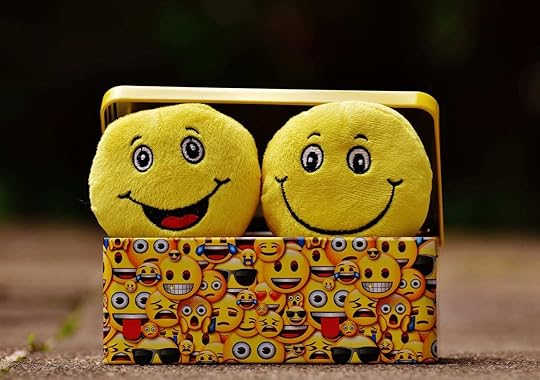
Skills to heal aren’t just practical things like knowing medical first aid. Interestingly enough, no one (that I know of) has come up with a trauma first aid course.
These are what people like to call coping mechanisms… but the unfortunate thing about just a coping mechanism is that it’s a holding place. It’s a small skill to help you in a high level crisis moment - it’s not a healing skill.
Skills to Heal are things like:
Counseling
Emotional Regulation
Grounding
Knowing Your Triggers
Recognizing Your Body’s Signals
Understanding what you’re going through instead of condemning yourself.
Understanding What’s Missing & Where and How to Get it
We’ll go through these individually before we get to the bigger skills.
Share Chronic Writer by VintageInkSlinger
Thanks for reading Chronic Writer by VintageInkSlinger! Subscribe for free to receive new posts and support my work.
July 31, 2025
What Happens When You Mess Up

First off - you are going to mess up. You are not always going to have what you need, even though you recognize it, acknowledge that and try to move forward with the resources that you have.
It’s important to put our perfectionist expectations aside. We all mess up. We all have less resources than we want to. And it’s unfortunately what we have to deal with.
Resources - no matter what they’re for (financial, emotional, physical energy level, spiritual) these resources do run out. And they don’t always stretch as far as we would like them to.
So our lives become a game of juggle the resources. Some people call this energy pennies or spoons. I like to think of it like a cell phone battery. The idea is that we have a limited amount of energy and need to recharge in order to function.
The idea is that if I’m running at 31% energy, I need to recharge and will have to say ‘no’ to some events and activities. This is especially true if you’re chronically ill and your personal battery can only charge to 51% on a good day.
And a person who’s running at 100% will be able to handle more events and they may not understand why I have to say no.
As a note: on migraine days, I run at 0% and it takes me a day or two to recover. I’m sharing this because its not abnormal for people who are trying to heal to find themselves needing to recharge for longer periods of time because healing takes energy even when you seem to be accomplishing nothing.
This is vital on a healing level because during the healing process we are not only physically healing (because trauma rewires our nervous system and part of the healing is to rewire it back to functional), but learning new things.
These new things include:
Skills to heal
New Emotions
New Emotional Regulation
Facing Old Memories & Experiences
We’ll talk about how to do these things in the coming weeks.
Share Chronic Writer by VintageInkSlinger
Thanks for reading Chronic Writer by VintageInkSlinger! Subscribe for free to receive new posts and support my work.
July 24, 2025
Healing Strategies

Healing in the real world is much different than healing in the movies and in books. Unfortunately, we base our worldview off stories, and when these stories are inaccurate, we carry those expectations into the real world.
Most of us know at least one movie where the hero faces something scary and then they get through it to accomplish their goals or complete their quest triumphantly. But healing isn’t like that.
Healing is an everyday thing. It’s best seen in the small stuff… like I didn’t yell at my kids when they started crying. I was able to calm down when my cat scared me.
So, how do we get to this mundane level of triumph?
We pay attention to ourselves.
We pay attention not in a selfish way - but we pay attention to what we need to accomplish and also what we are feeling. Even if we just say, “I am not feeling sad, mad or happy today,” that’s still progress.
Why is something so small progress?
It’s progress because we took the time to check in with ourselves and see if we’re ok. It’s like tuning in with someone who actually wants a truthful response to the greeting, “How are you today?”
Checking in with ourselves helps us to acknowledge the emotions that we are dealing with. Knowing what you are (or aren’t) dealing with on a basic level helps because it makes you aware of what could be needed to solve the problem. Even if that problem is as simple as, “I am tired. In order to face the day I need a cup of coffee.”
This gives you a next step. And that next step allows you to move forward.
Share Chronic Writer by VintageInkSlinger
Thanks for reading Chronic Writer by VintageInkSlinger! Subscribe for free to receive new posts and support my work.
July 17, 2025
Healing

Many times we like to make lists and get things done. And sometimes we’re been taught that healing is an easy clear cut process. This isn’t true.
Many recovery programs have an outlined plan, but individual treatments are not always successful because healing depends on not only the individual - but what that person’s body can handle.
Healing isn’t always about a person’s drive. I’ve had migraines for over twenty years - I’ve wanted to not have a migraine for those same twenty years. But my will to not have a migraine can only take me so far, because my migraines still win on some days.
Healing of trauma is like that. There are going to be days when the incident that hurt you will not be part of your life. There are other days when it suddenly becomes front and center. And finally there will be days when you look at the thing that you hurt from and say, “I’ve got this. I don’t have to be afraid any more.”… but something else, some other aspect of that incident will come up and knock you off your game.
This is all a part of healing that no one talks about. Many times the path that we think is straight and narrow and perfectly numbered - looks like a toddler’s scribble.
Lastly, healing isn’t always completeness. Sometimes it’s looking back and saying, “before I knew what was bothering me I would have been really upset at that incident I just went through. Today I’m not.”
The best thing is to just keep trying. Sometimes you’ll fail - but if you keep working at it - you’ll continue to heal.
Share Chronic Writer by VintageInkSlinger
Thanks for reading Chronic Writer by VintageInkSlinger! Subscribe for free to receive new posts and support my work.
July 10, 2025
Dealing with the Overwhelm
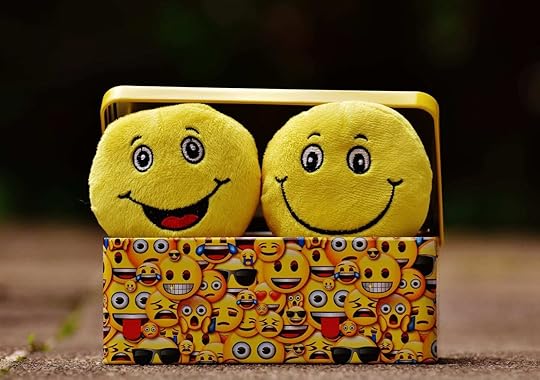
Sometimes problems are overwhelming, so it’s easier to not do anything. This is a mistake.
To not heal is to continue the dysfunction and that does a disservice to yourself and the following generations. Because people are not doing the work of healing, our ideas of trauma are often left back in the early 1900s… which means they are harmful and innaccurate.
Post Traumatic Stress Disorder (PTSD) still has the reputation of being the result of cowardice. This is not true. It’s also not just for military service members or those who survived war. This unfortunate idea is from the 1860s. (During the American Civil War)
Today we know that PTSD is not tied to cowardice, but the body’s reaction to a traumatic, life-threatening moment and the flashbacks are just the body trying to process that.
The best way to deal with the overwhelm of starting to heal is just work slowly at it. Take time to figure out what will work best for you and what you need.
It’s not always a matter of going to a professional or seeing a specialist. Sometimes it’s a case where you just have to Google your symptoms and confirm what is ‘normal’ and what’s available in your local area for healing resources. If you’re in the United States dialing 211 will get you local professional resources unique to your area.
Also, don’t be afraid to look for discounted or special programs. Mental health counseling and medical care is expensive - even though it should not be out of budget for anyone to try to heal. Sometimes workplaces and community programs offer discounts.
The important thing is that you just start the progress. And that can look like doing one thing a day - or taking a day to do twenty things.
Just start the progress toward healing.
Share Chronic Writer by VintageInkSlinger
Thanks for reading Chronic Writer by VintageInkSlinger! Subscribe for free to receive new posts and support my work.
July 3, 2025
Acknowledge the Problem

Acknowledge the Problem
I know this sounds a lot like other trainings, but you have to acknowledge that something is missing or wrong before you can start to heal it. You don’t have know exactly what that missing or much needed thing is - but you do have to decide to do something about the issue.
That can look like realizing that you yell at your kids too often. Or that your child is scared of you. And it can especially look like you having fears that while you think they’re real - they’re not realistic.
We all as grown ups understand there’s probably not going to be a giant tiger lurking in the hallway of our house. But the fear reaction is a lot like that. It lives with us… and we kind of get used it. It’s like a program running in the background - or the fan on your computer that runs a little too often on hot days.
Also, our memories don’t always have to cause fear. They can cause anger, sadness, regret, grief, as well as fear.
The important thing about this is that you’re willing to do the work to heal. And that you start gathering a team of trusted, supportive and qualified individuals to help you.
Share Chronic Writer by VintageInkSlinger
Thanks for reading Chronic Writer by VintageInkSlinger! Subscribe for free to receive new posts and support my work.
June 26, 2025
Recap
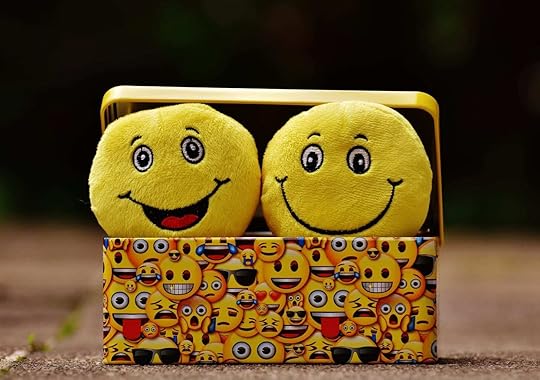
So far we’ve spent time going over what we might find in our past. I’ve called it The Danger Box.
The Danger Box is how we process the world. Is it dangerous or scary? Or is it ok or safe?
This is what we learned as children and we continue to use this system as adults. If we want to heal, we have to look inside the Danger Box and sort it.
I’ve spent the first part of the year talking about what we might find in the Danger Box. Now we’re going to start talking about how to heal what’s happened.
Its really important to note that some incidents there is no ‘complete healing’. You’re not going to go back to the person you were before the traumatic thing happened. There will always be a before and after - but the big feelings around it will lessen.
A lot of people also like to toss around the terms forgiveness and healing.
Forgiveness is not something you have to do. And being pressured to forgive someone is manipulation.
If you choose to forgive - it should be your choice - not for the sake of others’ comfort or to keep the family peace. If you had to forgive someone because if you didn’t forgive them, you would be unsafe - that’s manipulation too.
I don’t know what real forgiveness is because I’m not there in my healing. I just know what it’s not. I just know that if you aren’t there in your healing process - it’s ok not to forgive. And sometimes for those who have no boundaries - a lack of forgiveness to keep them at a distance so that you’re safe is a good thing.
Share Chronic Writer by VintageInkSlinger
Thanks for reading Chronic Writer by VintageInkSlinger! Subscribe for free to receive new posts and support my work.
June 19, 2025
Early Childhood Trauma
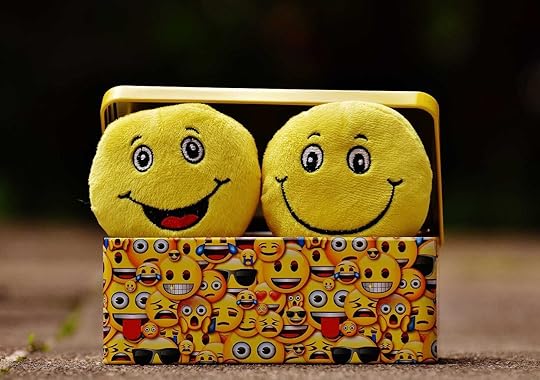
Early Childhood Trauma occurs before age twelve and because a child is still growing and developing at this point in their lives, it impacts their nervous systems in dramatic ways. The emotional habits that kids witness and develop at this age impact them, often for life. This is why it’s important to work with yourself and your kids to process emotions in healthy ways.
Kids have no filter. They experience emotions immediately. They’re learning emotions from the adults around them too.
So when something dangerous or bad happens, the kids turn to grown ups for help. The unfortunate thing is that grown ups don’t always know what to do in a crisis and we get tired and cranky and have our own emotions to deal with on top of the crisis and the small ones. And that means that grown ups snap. We show our emotions in unhelpful ways and often at the ones we love the most.
It’s important kids learn healthy emotions from us because when they get frightened as adults, they will slide back to the age of small children. While we as grown ups can’t protect children from everything (nor should we) we do want to give the next generation of children a healthy foundation to experience life.
You will see these things happen to you as you open the danger box. This also means you’ll be seeing and spending a lot of time with yourself as a small child dealing with the contents of the danger box. This will be challenging, because you the current grown up, get to work with your past child, giving your past child back the things that trauma stole from you and working toward healing.
Share Chronic Writer by VintageInkSlinger
Thanks for reading Chronic Writer by VintageInkSlinger! Subscribe for free to receive new posts and support my work.
June 12, 2025
Post Traumatic Stress Disorder
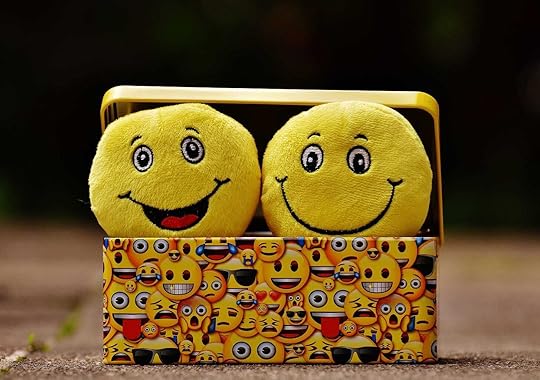
Post Traumatic Stress Disorder
Let’s break it down:
Post Traumatic
This means it happens after the event or events.
For some people it’s months, for others it’s decades later when your body finally reaches a place in life where the original bad situation can be dealt with.
Trauma
Trauma is an event or series of events which overwhelms an individuals’ ability to cope and process the events. (For more info: https://chronicwriter.substack.com/p/what-is-trauma and https://www.psychologytoday.com/us/basics/trauma)
Stress
Stress is pressure or drive in the human body due to a survival response. It is not always motivated by fear. Stress is not 100% bad. It is good and can serve as a motivator. Stress becomes problematic when it interferes with daily activities and your personal mental or physical health.
Disorder
Officially this is what people with degrees behind their names and official titles label a problem. But that does very little for the person who is suffering.
Disorder is what the problem does to your life and those around you. It is the title attached to the problem.
Once the problem is recognized it can be solved. Again, professionals with degrees call this a diagnosis. A diagnosis is falsely believed to be an all-important catch-all title that people seek and some believe that once the problem has an official title that it can be easily solved. This is not truth.
A diagnosis is a category of symptoms that are used to group and label people for treatment. Sometimes these labels are helpful, because it gives the problematic symptoms a name. Other times that’s not true and the diagnosis title is no help at all.
You can suffer and not have a diagnosis.
You can also have a diagnosis and still suffer.
Both are true in the case of Post Traumatic Stress Disorder.
The symptoms of PTSD:
Exposure to an event or events which cause trauma
Symptoms that show up in your life after the traumatic event occurred and are problematic and affecting activities or daily life
Avoiding things and situations that caused the trauma, as well as the memories and feelings around it. (An example would be after a car accident a person is nervous while driving and avoids the location where the accident occurred to the point where they take an hour long detour rather than going to the accident site again.)
Mood and thoughts are altered. This could be emotionally or a self worth issue. It could also mean being unable to remember the traumatic event. That doesn’t mean something didn’t happen - it means that you don’t remember it.
These symptoms must last longer than a month, impairs functioning, (as in you can’t go to work) and its not caused by substance abuse or a medical condition.
Check your experiences of symptoms here: https://www.mdcalc.com/calc/10211/dsm-5-criteria-posttraumatic-stress-disorder
Note that these symptoms do not reflect on anyone’s courage. When PTSD was first realized in modern warfare it was thought to be a soldier’s cowardice that caused it. That’s not true.
Share Chronic Writer by VintageInkSlinger
Thanks for reading Chronic Writer by VintageInkSlinger! Subscribe for free to receive new posts and support my work.
June 5, 2025
Hypervigilance

Hypervigilance is when the fear response takes over your life and everything is terrifying, even when the logic part of you knows that what you’re experiencing isn’t life threatening. Its a big component of trauma and various forms of Post Traumatic Stress Disorder.
This is more than encountering a surprise and jumping. After a mundane incident you should be able to calm down.
For example: You live alone except for your pet cat, and you get up in the middle of the night and see movement. Your breath catches and your heart starts racing. Your body jerks backward and you screech - only to realize that the movement you saw was your cat - not someone who shouldn’t be there.
After you realize that this is your cat - you should be able to recognize that you’re safe. You should be able to release the tension by either breathing, laughing, having a drink of water or petting your cat while gently scolding it for scaring you. In a few minutes (probably less than 20 minutes) you should feel calmer and you’ll be able to go back to bed and sleep semi-successfully.
This is a normal fear reaction.
If there had been danger, this fear reaction would have helped you survive the threat and take action to protect yourself.
Hypervigilence is when the fear response instead of running in the background - is front and center - because your body thinks that it has to be. This is not a conscious choice most of the time… meaning you do not purposely scare yourself into this state.
A good example is I used to work as a security guard. Nothing terrible ever happened while I was working my shift, but I had to be ready for that terrible thing to happen. So I was ‘on alert’.
That ‘on alert’ physical and mental state was consistent throughout my shifts, but I didn’t have the ability to turn it off when I left work. I didn’t know how.
So I had to retrain my body how to relax. But that was only after my body was so stressed I couldn’t physically work any longer. And that relaxation took years - because hypervigilence had taught my body that relaxing was going to harm me because I wouldn’t be ready to respond to emergencies.
To teach your body how to relax, try grounding exercises, focusing on breathing or sensory things like cold or hot drinks. The point is to work with what your body can handle in that moment to act as a small foothold or entry to teaching your body that its safe enough to relax.
Share Chronic Writer by VintageInkSlinger
Thanks for reading Chronic Writer by VintageInkSlinger! Subscribe for free to receive new posts and support my work.



